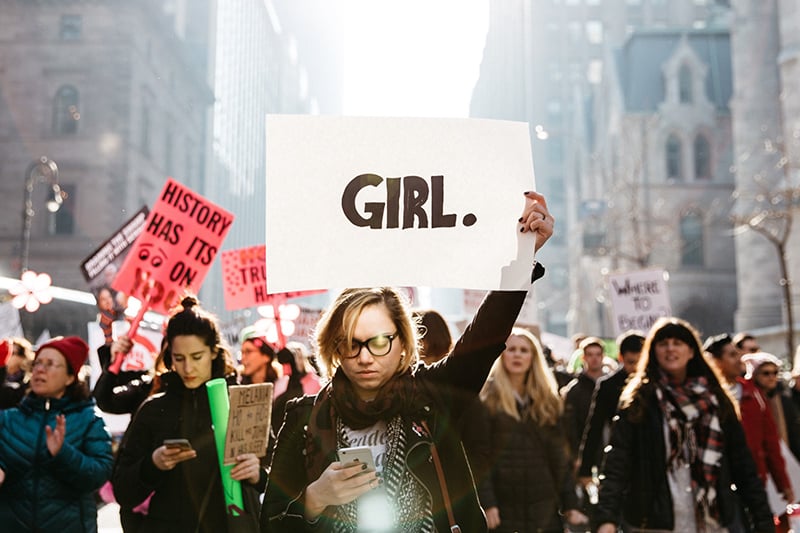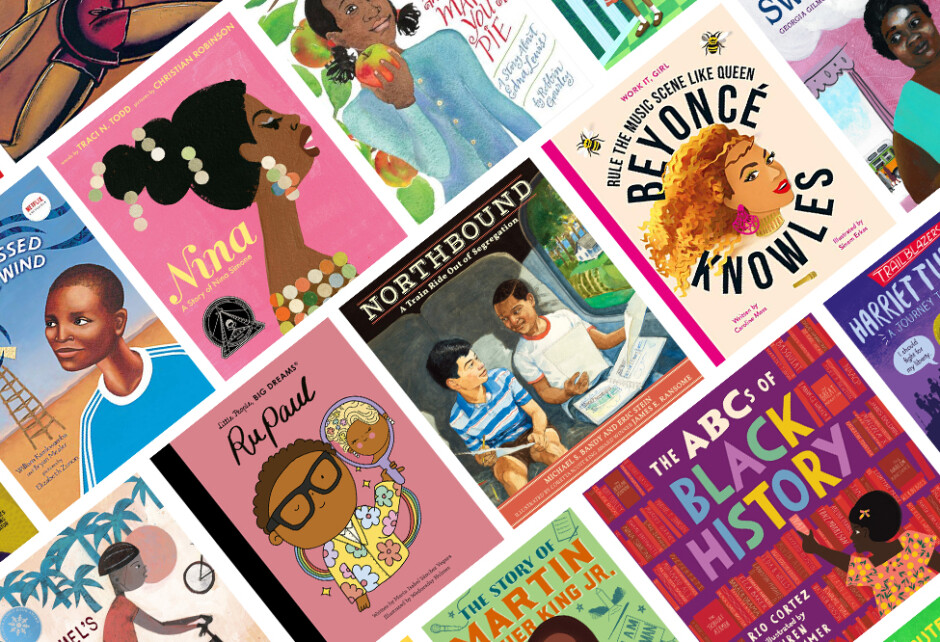
Woman’s Rights: One Year In From The Women’s March
Written by Kate MacLean
Photography by Photo Via David Everly
If only every day could be the day of the Women’s March. Families walking and laughing together. The inspiring speeches. The witty, the heartbreaking, the perfectly cutting signs. The sea of pink. It was a drab and cold January day, just hours after Donald Trump improbably took office, and it became one of the most widely attended, inspirational, positive (and pink) American marches in history.
After the election it was hard to see what—if any—positivity could come from the next four years. The pessimist in most of us was only able to see the orange human blockade that was Trump and his band of angry white men. Any change that came would have to be by groundswell. In a day where both attention span and empathy are low, it is understandable that most pundits were worried we were doomed for a thoroughly dark year. But, the March set a different, more optimistic and empowering tone for the American woman’s response to the Trump presidency.
While the usual white men in power did their damnedest to make this year as unhappy as their limited imaginations could dream, they have been, mostly, defeated over and over again. Progress has been slow in 2017, but women and their allies have done their best to make sure we don’t slip too quickly—or quietly—backwards. Through viral social media hashtags, call-your-congressman campaigns, follow-up demonstrations and marches, merciless activism from organizations like the ACLU, and judicial bravery by various courts, the peaceful movement in the face of obstinate Trump has had many a great win.
To that end, we wanted to offer a recap of the Women’s Rights Movement of 2017. Where we were challenged, and what fights were won and (temporarily) lost. There were two competing trends seen in 2017: white men attempting legislative, executive, and judicial change to control women and their bodies, and the more heartening trend of women and their allies using the power of the collective voice to push their rights forward.
Family Planning
It is unlikely, however conservative the bench of the High Court were to grow, that the Justices would obliquely overturn Roe v. Wade. Scholars site 40 years of precedent; it would be an uncharacteristically aggressive move. Because of this, the earnest white men of the current administration have vowed to undermine abortion rights and protections in any way they can, picking often on the most disadvantaged women.
Just last month, in one of the more appalling actions a government can take over the body of a woman, the director of the Office of Refugee Resettlement, Scott Llyod, announced his office would not allow an abortion to proceed for an undocumented teenager in government custody even though the pregnancy was the result of a rape, and the girl very much wanted the abortion.
Because they cannot overturn Roe v. Wade, this government has decided to declare repeated war this year against Planned Parenthood. The audacity of the organization to facilitate a woman’s right to choose and a woman’s right to responsibly plan when and if to have children seems to eat away at the personal happiness of these short-sighted men. Continually, the organization’s fiscal future has been threatened in the successive (and ultimately doomed) attempts to repeal Obamacare. Much like organizations like the ACLU and the SPLC, Planned Parenthood has come to rely on the generosity of its constituents. In the first 100 days of Trump’s presidency, the family planning organization saw a 1000% increase in donations.
Of course, the administration not only wants to block access to abortions, but they want to make it harder, too, for women to be in charge of their own birth control. Under Obamacare, more than 55 million women had birth control coverage without out-of-pocket expenses. In October, President Trump issued a new rule that would allows more leniency for businesses who don’t want their company’s healthcare paying for contraception. Nancy Pelosi called this a “sickening plan to roll back women’s access to contraception.” The rule has temporarily been blocked by a judge.
Sexual Assault and Harassment
Undeniably the biggest development in women’s rights in the past decades began this fall with the #MeToo movement. With a collective mass of voices, women who had been assaulted and harassed by high-profile men were finally heard. Big names were taken down in Hollywood, radio, television, and Washington. Dueling op-eds were battled through the papers. Ultimately, many men were fired, many more men continue to walk free, so far nobody has gone to jail, and despite Woody Allen’s fears, nobody has actually been burned at a stake.
Women in Hollywood report of a systemic cultural shift—if only superficial—in elevators, business meetings, and on conference calls. Women in politics have introduced a new bill to combat sexual harassment on the Hill. A description of the current process for filing complaints on Capitol Hill is angering: “Through the Office of Compliance, staffers must go through months of mediation and counseling with the employing office before they can file a complaint. During the mediation process, the parties involved sign an agreement to keep all documents and communications confidential.” The new proposed legislation would require sexual harassment training for all lawmakers and would greatly reform the aforementioned process for complaints.
Of course, workplace sexual assault and harassment isn’t limited to these high-profile jobs. It is the hope of many that this larger cultural shift towards awareness will trickle down to the less glamorous professions. For their part, the female glitterati have started a legal defense fund, Time’s Up, which is available for all women of all professions to aid in their fight against their assaulters. But, change in all professions will take a united and unrelenting movement that cannot afford to lose momentum.
Groundswell to Political Change
The groundswell of women and their allies fighting for their rights is heartening, but progress won’t exist on this alone. In order to affect reasonable change, we need more women represented in every corner of the government. Currently, there are just 106 women to the 429 men in Congress (more egregiously, only 38 of these 106 are women of color). We have just three Supreme Court Justices. There are a paltry six female governors, and women make up only 21% of the U.S. mayors. Women hold about 24% of state legislators, with women of color holding only 5% of those seats. Women—of all colors and political parties—need to start running for (and winning) offices at local, state, and federal levels.
Heartingly, Emily’s List (the organization devoted to electing pro-choice women candidates) reports that in 2015-2016, they had a record year of 920 women exploring the option to run for office. This past year, since Trump’s inauguration, that record exploded to over 16,000 potential candidates. We are already seeing the effects of these industrious women in last November’s elections.
You could have been hard pressed to find something positive to look forward to last November 9 when the world as we knew it came to a halt, and we were thrown into the current bizarro-world landscape. Granted, pretty much everything is not where we would want it. Women are still fighting for the very basic right to not carry an unwanted pregnancy, or to not be assaulted at work. White men are still in charge. But, looking ahead to 2018 with the momentum we’ve built in 2017, this year could be even more productive than the last. He may be president, but we know that love—and a heck of a lot of intelligence and perseverance and hard work—really does trump hate.
Share this story




